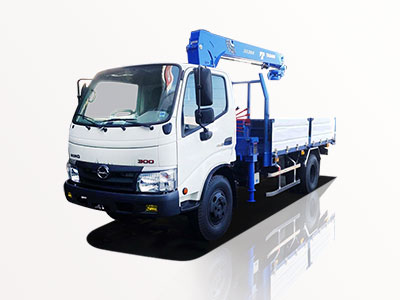Introduction
The Isuzu NPR is a popular medium-duty truck known for its durability and efficiency. Understanding the fuel system is crucial for maintenance and troubleshooting. A well-functioning fuel system ensures optimal engine performance and longevity. This article provides a comprehensive overview of the Isuzu NPR fuel system diagram, exploring each component, its function, common issues, and practical maintenance tips. Whether you’re a mechanic, truck owner, or simply curious about how the fuel system works, this guide will equip you with the necessary knowledge.
1. Overview of the Isuzu NPR Fuel System
The Isuzu NPR’s fuel system is designed to deliver the right amount of fuel to the engine while ensuring maximum efficiency. It comprises several components, including the fuel tank, fuel pump, fuel filter, fuel injectors, and fuel lines. Understanding how these components work together helps diagnose issues and carry out repairs effectively.
1.1 Key Components
- Fuel Tank: Stores diesel fuel and can vary in size based on the model.
- Fuel Pump: Draws fuel from the tank and pumps it into the engine.
- Fuel Filter: Removes impurities and contaminants from the fuel before it reaches the injectors.
- Fuel Injectors: Atomize the fuel for efficient combustion in the engine’s cylinders.
- Fuel Lines: Connect the components of the fuel system, ensuring the safe transport of fuel.
2. How the Fuel System Works
The Isuzu NPR fuel system operates on a basic principle: the transfer of fuel from the tank to the engine with precision and efficiency. Here’s a breakdown of the process:
2.1 Fuel Delivery Process
The fuel delivery process initiates when the driver starts the engine. The fuel pump engages, drawing fuel from the tank and pushing it through the system:
- The fuel pump activates and moves diesel fuel from the tank.
- Fuel travels through the fuel lines to the fuel filter.
- The fuel filter cleans the fuel of any debris and impurities.
- Clean fuel reaches the fuel injectors, which spray it into the engine cylinders.
- The engine combusts the atomized fuel, providing power for the vehicle.
3. Isuzu NPR Fuel System Diagram
A visual representation of the Isuzu NPR fuel system can greatly enhance understanding. Here’s a simplified diagram:
| Component | Function |
|---|---|
| Fuel Tank | Stores fuel |
| Fuel Pump | Moves fuel to the engine |
| Fuel Filter | Removes impurities |
| Fuel Injectors | Atomizes fuel for combustion |
| Fuel Lines | Transport fuel between components |
4. Common Issues in the Isuzu NPR Fuel System
Understanding common issues can save time and money. Here are some frequent problems associated with the Isuzu NPR fuel system:
4.1 Fuel Pump Failure
Signs of fuel pump failure include difficulty starting the engine and decreased power during acceleration. Regular maintenance can help prolong the life of the fuel pump.
4.2 Clogged Fuel Filter
A clogged fuel filter can restrict fuel flow, leading to engine stalling or reduced performance. It’s recommended to replace the fuel filter every 15,000 to 20,000 miles.
4.3 Leaking Fuel Lines
Leaks in the fuel lines can pose a significant safety hazard. Look for fuel spots under your vehicle or the smell of diesel fuel as indicators of a leak.
4.4 Fuel Injector Problems
Dirty or malfunctioning fuel injectors can lead to poor fuel economy and reduced engine performance. Regular cleaning or replacement can prevent these issues.
5. Maintenance Tips for the Isuzu NPR Fuel System
Regular maintenance of the fuel system can enhance performance and extend the life of your vehicle. Here are some practical tips:
5.1 Regular Inspection
Check fuel lines for signs of wear or damage. Regular inspections can help catch problems before they escalate.
5.2 Change the Fuel Filter
Replace the fuel filter according to the manufacturer’s guidelines. This helps maintain fuel flow and protects the injectors.
5.3 Clean Fuel Injectors
Fuel injector cleaning can be performed using specific chemical cleaners or professional services. This ensures optimal fuel atomization and combustion.
6. Troubleshooting Common Fuel System Problems
If you encounter issues, troubleshooting is vital. Here’s a guide to addressing common fuel system problems:
6.1 Starting Problems
If the engine doesn’t start, check the fuel pump by turning the ignition on and listening for it to activate. If you don’t hear it, the pump may need replacement.
6.2 Poor Engine Performance
Inspect the fuel filter and injectors. A clogged filter or dirty injectors can lead to inadequate fuel delivery and performance issues. Clean or replace them as necessary.
7. Frequently Asked Questions (FAQ)
7.1 What type of fuel does the Isuzu NPR use?
The Isuzu NPR typically runs on diesel fuel. Always check the owner’s manual for specifications related to your model.
7.2 How often should I replace the fuel filter?
It is recommended to replace the fuel filter every 15,000 to 20,000 miles, but consult your owner’s manual for specific recommendations.
7.3 How can I tell if my fuel pump is failing?
Indicators of a failing fuel pump include difficulty starting, engine sputtering, or a sudden drop in power during acceleration.
7.4 What should I do if I suspect a fuel leak?
If you suspect a fuel leak, stop using the vehicle immediately and have it inspected by a professional. Fuel leaks can be hazardous and should be addressed promptly.
7.5 Can I clean fuel injectors myself?
Yes, you can use fuel injector cleaner available at auto parts stores. However, for extensive cleaning, it’s best to consult a professional.
7.6 What causes a clogged fuel filter?
A clogged fuel filter is often caused by impurities in the fuel, such as dirt and sediment from the fuel tank or the overall fuel system.





